Your Expert Guide: The best museums in Mexico (2024)

There are almost 1500 museums in Mexico and 173 of them are in the capital, Mexico City. These numbers are both impressive and overwhelming, so if like me, you’re a bit of a museum buff, why not take a read and find out where the very best museums in Mexico are located.
We don’t imagine you’re going on vacation purely to visit museums so in each museum location we’ll also include links to other articles to help you plan your Mexico vacation, ensuring you have an incredible time in this wonderfully diverse and fascinating country.
⭐️ Anywhere it’s advisable to buy tickets in advance, I’ve included options to do so.
Mexico City
Most of Mexico’s most famous and most important museums are unsurprisingly located in Mexico’s incredible capital city, Mexico City (CDMX). This is one of my most favourite cities in the entire world and one of the the reasons I love it so much is the seemingly never-ending supply of museums to visit. I’ve been to at least 30 of them already and am still looking out for new ones to explore. Obviously, we aren’t going to list all the museums here, instead, just the most famous, the very best, and perhaps a few of my strange favourites as a little freebie.
There are affiliate links in this article. If you click and make a purchase I could make a small sum at zero cost to you. Thank you!
Mexico City Information
➡️ How to spend 3 days in Mexico City
➡️ Exploring Mexico City with kids
➡️ Exploring Bosque de Chapultepec, Mexico City’s best park

The National Anthropology Museum (Museo Nacional de Antropologia)
by Claire, from Tales of A Backpacker
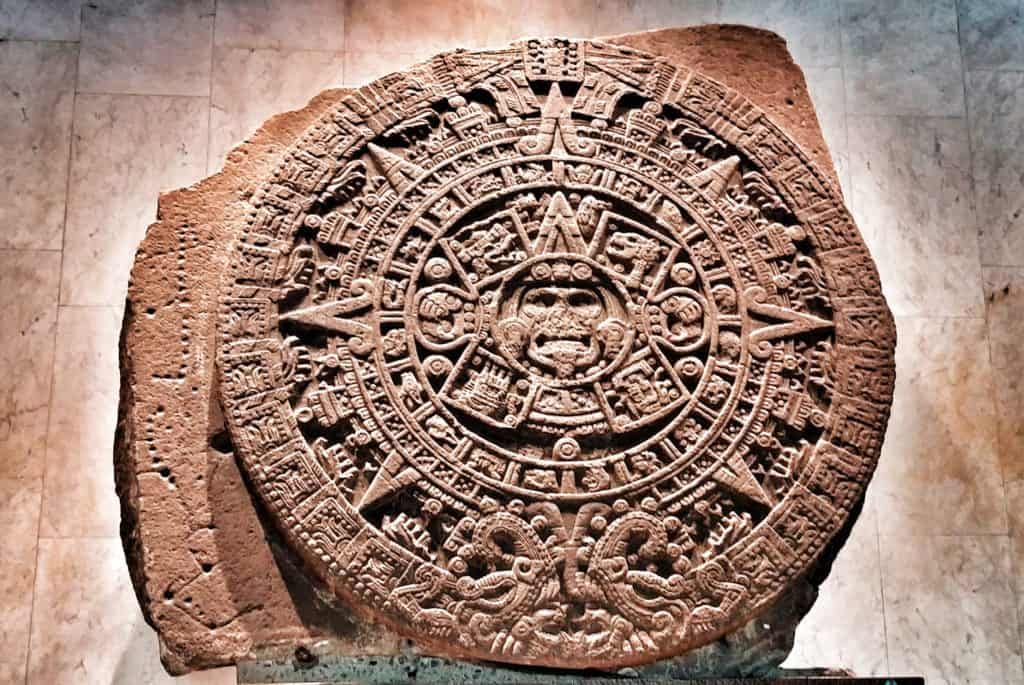
Mexico City’s National Museum of Anthropology is a huge museum and is one of the most popular museums in Mexico for good reason. The museum is located in one corner of the enormous Chapultepec Park, and its exhibition halls are laid out around a central courtyard.
The ground floor of the museum traces the history of humans in Mesoamerica, from the arrival of homo-sapiens through to the Spanish conquest, and the upper floor covers the modern history since the conquest. Each exhibition hall houses a magnificent collection of artefacts from all of the pre-Columbian civilisations, including the Maya, and the Mexica.
The museum is huge, and if you have time I suggest visiting on two separate days to allow yourself enough time to digest all the information. If you only have one day though, spend most of your time on the lower levels, and do not miss the Mexica hall, which houses the incredible Aztec Sun Stone. This huge circular stone measures over 3.5 metres across and weighs over 20 tons. The Sun Stone was found on the site of the Templo Mayor pyramid which is now another wonderful museum next to the Cathedral in the main square. The museum also has a fascinating exhibit about Teotihuacan, which is useful to visit before you go to the archaeological site just outside the city.
Museo Anahuacalli
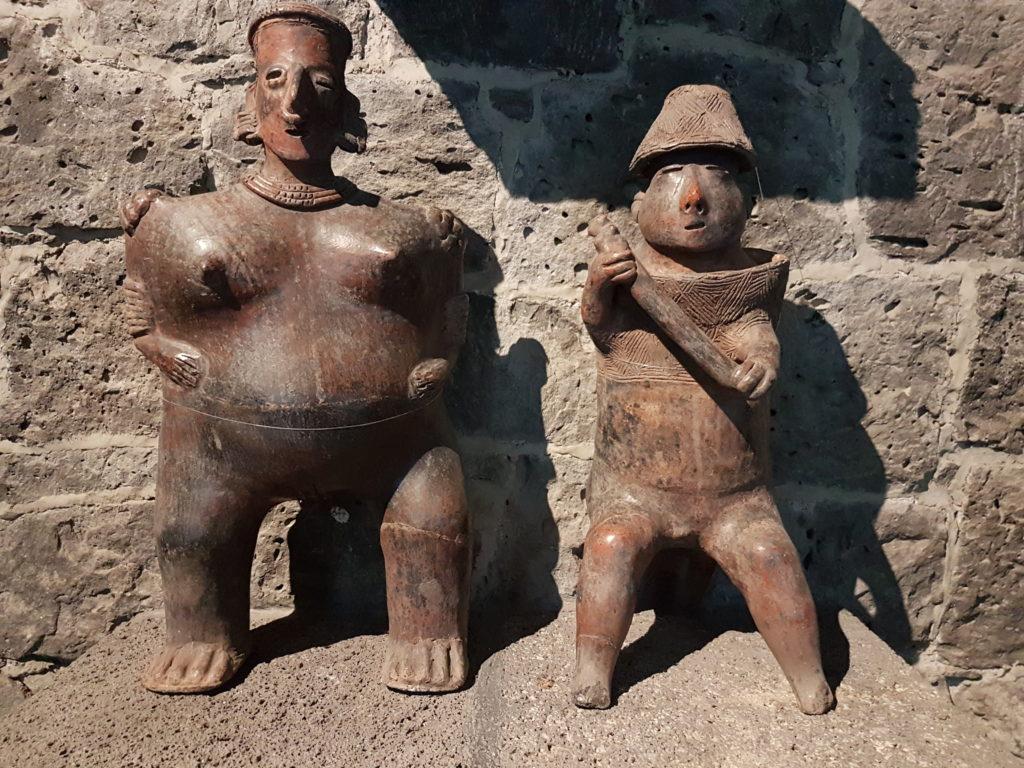
Museo Anahuacalli is my personal favourite museum in, not only Mexico, but the world. This enormous museum is home to Diego Rivera’s vast collection of pre-hispanic artefacts. Rivera designed this museum but sadly, didn’t live to see it completed.
The museum is built almost entirely of local volcanic rock and is an impressive building before you even begin to consider the fabulous collection within.
While a museum that is case after case of small clay figures may not sound like it’s going to be super fun, I assure you, it really is. This collection gave me a completely different view of pre-hispanic Mexican society and family life.
As an added bonus, there is an enormous chamber with a number of Rivera’s mural sketches that can hold one’s attention for hours.
Casa Azul (Museo Frida Kahlo)
By Caroline from Pictures and Words
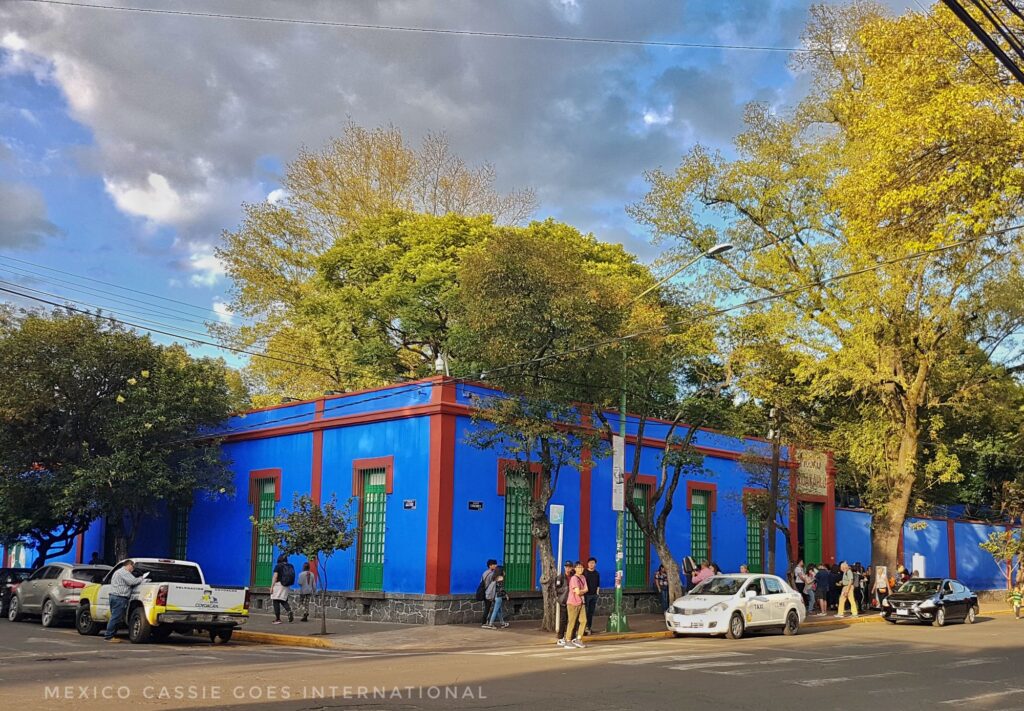
Celebrating the life and works of the renowned artist, the Frida Kahlo Museum is definitely one of the most famous and must-visit museums in Mexico. The museum, also known as La Casa Azul (or the “blue house”) for its iconic bright cobalt blue exterior, is where Kahlo was born and raised and later she lived with her husband, and fellow painter, Diego Rivera.
The museum houses a small collection of Kahlo’s (and Rivera’s) important works; however, what you are really here for is to get a glimpse into the artist’s childhood, life, and creative inspirations. The house has a well-curated collection of the artist’s personal artefacts – from her clothing, kitchen items, art supplies, and more. The house, which was built by Kahlo’s father three years before her birth, also displays a collection of photographs from her childhood. The house also gives you a glimpse into the artist’s (somewhat tumultuous) relationship with Rivera.
This is one of the most popular tourist attractions in Mexico City, so I highly recommend buying tickets ahead of time – or be prepared to wait!
Note: while you’re in Coyoacan to visit the Casa Azul, why not take an extra hour or two to check out the Leon Trotsky museum, which is just down the road.
⭐️ Save 10% by buying a bundle skip the line ticket for Casa Azul, Museo Anhuacalli, Teotihuacán Round trip and guide + National Museum of Anthropology (with guide)
Museo Dolores Olmedo
by April from justleavingfootprints.com
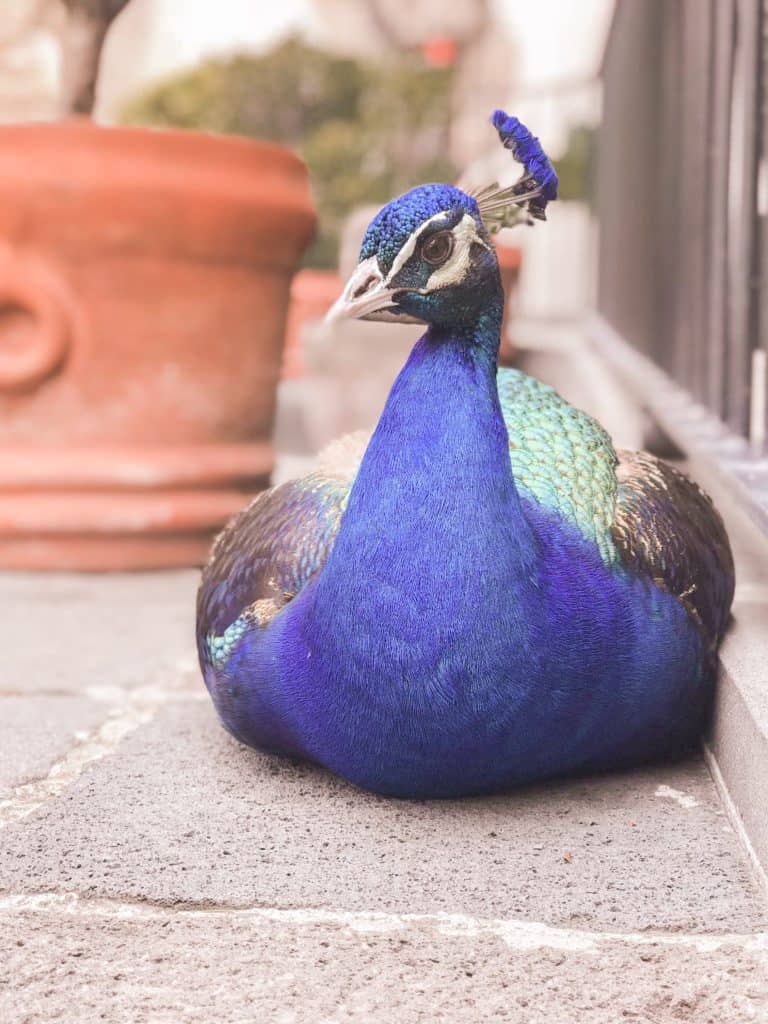
Dolores Olmedo supported artists like Diego Rivera and Frida Kahlo by buying their artwork. The museum is housed in an old hacienda.
It is thought that Olmedo’s relationship with Frida and Diego was a ‘complicated’ and that she liked Diego much more than she liked Frida. Diego actually made a series of nude paintings of Dolores. The reason I love this museum so much is that it is not only beautifully filled with gorgeous paintings, but it is also breathtaking outdoors too. The hacienda consists of a different buildings and between them are blooming gardens, meandering peacocks an even an area where Mexican Xoloitzcuintli dogs get to play around.
Wandering through the grounds of this museum is simply breathtaking and really adds to the visitor experiences. The museum is also incredibly close to the colourful floating riverboats of Xochimilco.
Palacio de Bellas Artes
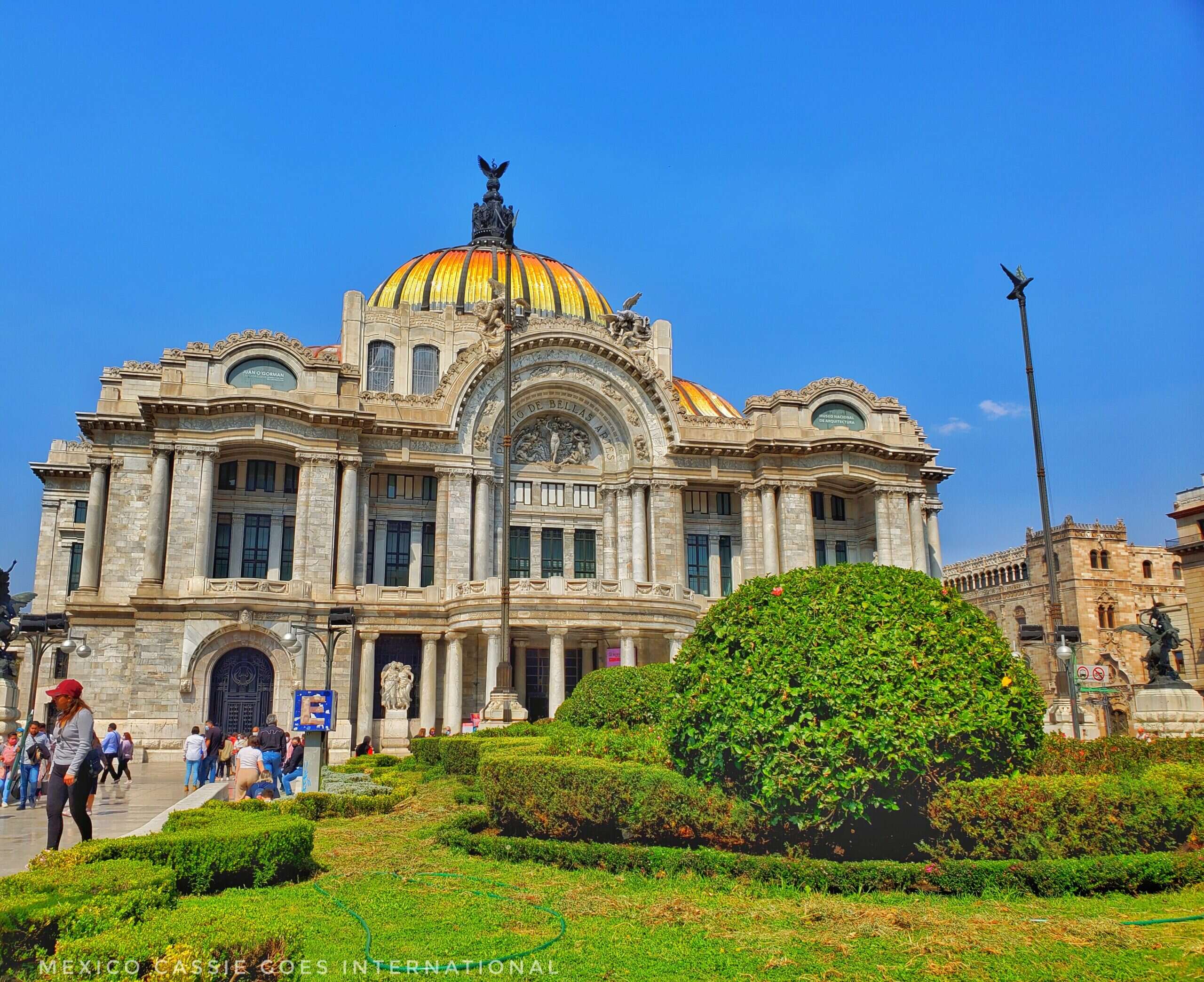
This might not be one of the most famous museums in CDMX but it is absolutely one of the most iconic buildings in the city and very few people who visit Mexico City will not walk by this gorgeous building. I highly recommend taking the the time to visit this cultural centre. Located in the historic centre of Mexico City at one end of the Alameda Central, this incredible building has an art nouveau style on the exterior and a primarily art deco interior. Inside expect to find fabulous murals by Diego Rivera, David Alfaro Siqueiros, Camarena and others.
Museo del Templo Mayor
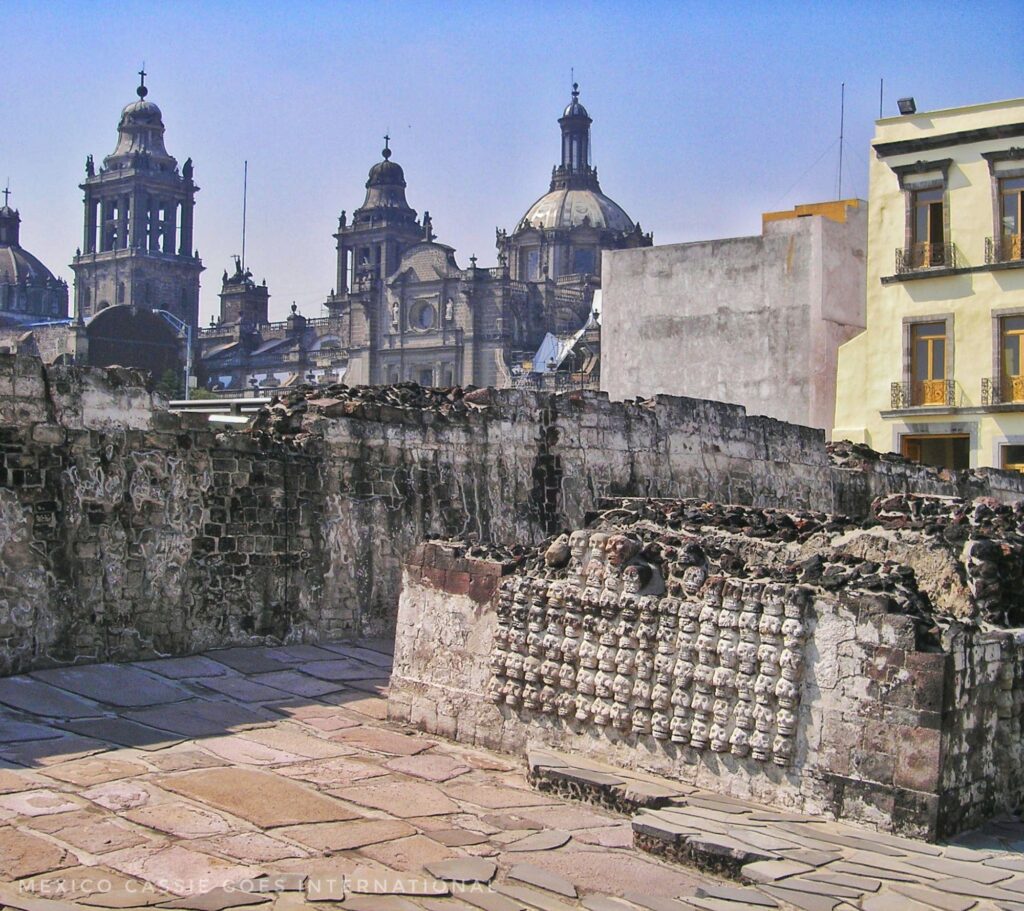
Right in the historic center of Mexico City, by the cathedral on the zocalo is the Museo del Templo Mayor. Your entrance ticket to this wonderful museum includes the opportunity to walk through the Mexica archaeological site. The collection inside the museum displays political, military and religious artifacts from the ancient city. I’ve visited 3 times and can’t wait to go back!
Museo de Arte Popular
Just one block from the wonderful Museo Memoria Y Tolerancia is the this Museum of Folk Art. Its permanent collection includes textiles, pottery, piñatas, alebrijes and more from various Mexican cultures and traditions.
Every October, this museum sponsors city’s Noche de Alebrijes that parades through to Zocolo.
Museo de Arte Moderno (MAM)
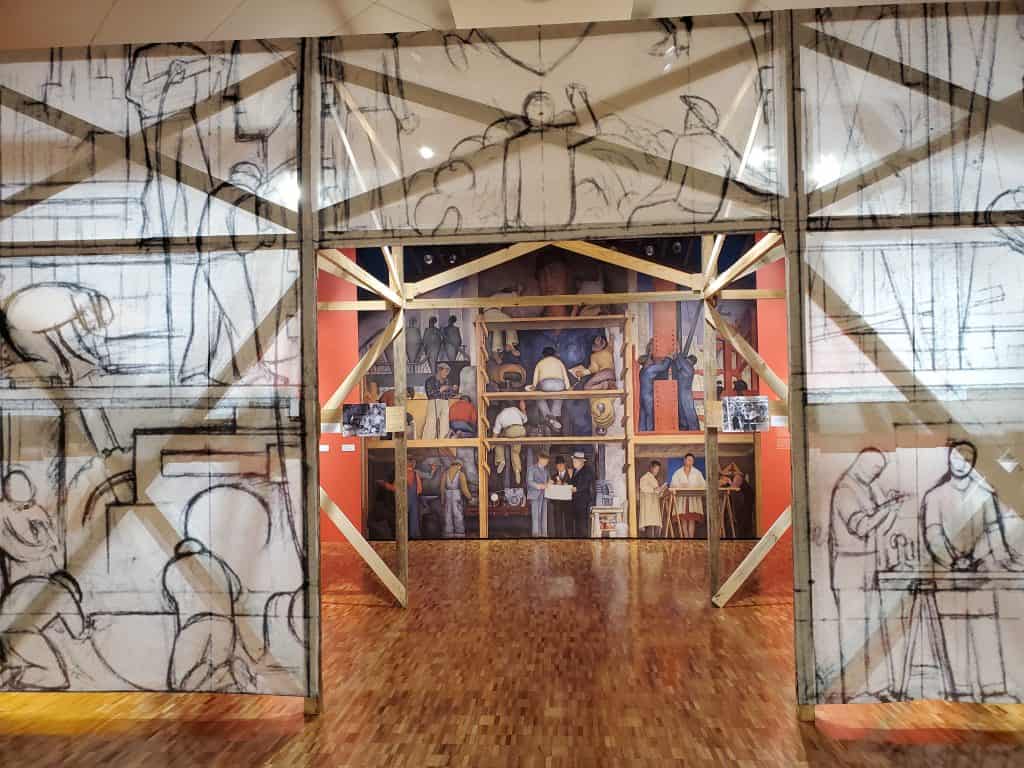
One of the many museums in Mexico City’s magical Bosque de Chapultepec, this art museum houses a lovely sculpture garden and modern art mainly from 1930s onwards. Expect to find works from the big names in Mexican art: Kahlo, Siqueiros, Orozco, O’Gorman, Rivera, Tamayo, and many more.
While you’re in the park do not miss out on a visit the Castillo de Chapultepec, the imposing castle on a hill overlooking the park.
Museo Jumex and Museo Soumaya
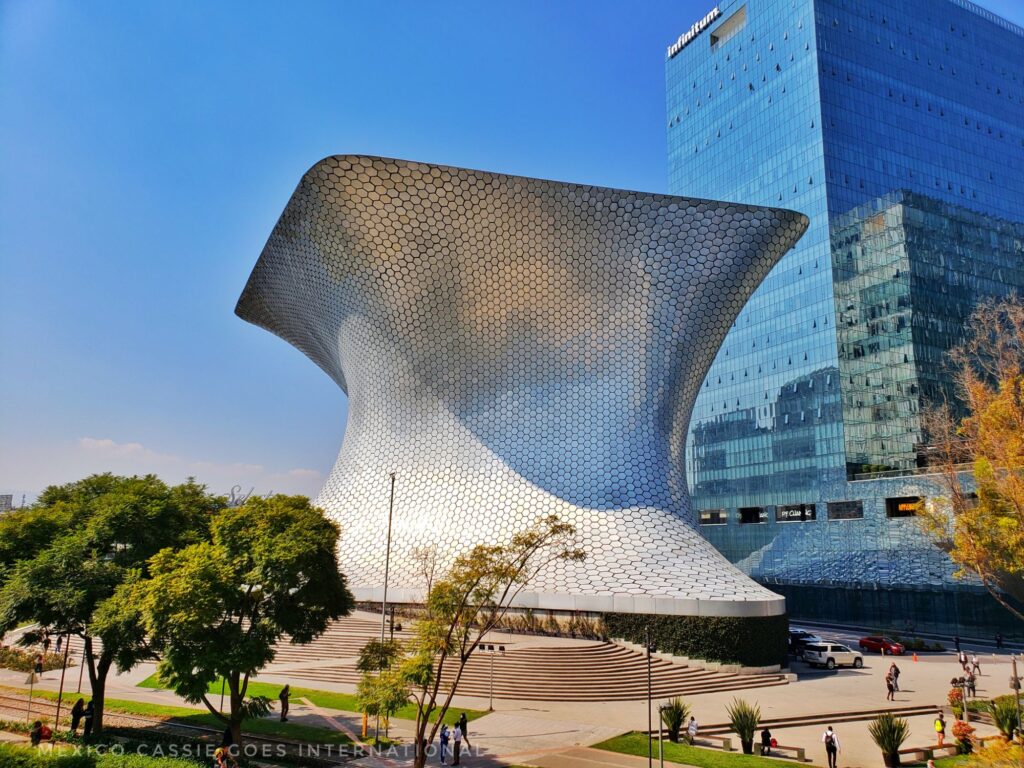
Located next to each other in the affluent Granada (near Polanco).
You may have seen photos of the fabulous Soumaya building (above), curved and silver, glinting in the sun. It’s worth checking out just for the exterior, quite honestly. This private museum (that is also a non-profit organization) houses works from over 30 centuries, from both pre-hispanic Mesoamerica and the European old masters such as Rodin, Salvador Dalí, Murillo.
The Jumex Museum is another great private art collection that includes works by international artists such as Damien Hirst, Andy Warhol, Marcel Duchamp and more.
Monumento a la Revolucion
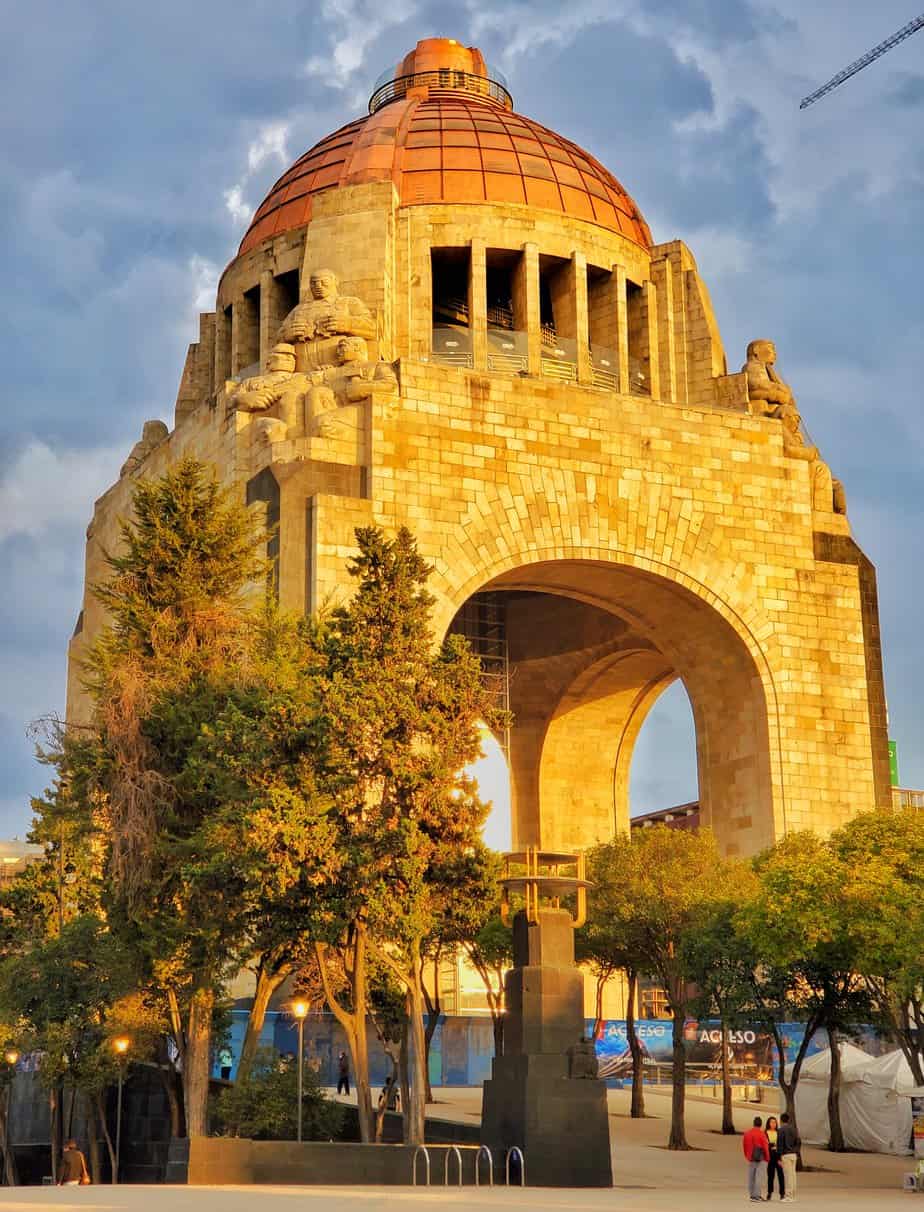
This fabulous monument to the Mexican revolution is an important place to visit if you’re interested in Mexican history (it also has my favourite gift shop of any museum in Mexico!). Not only can you take an elevator up to the viewing platforms (and then climb steps to get even higher) but there is a great museum on the ground floor dedicated to the Mexican revolution.
➕ Mexico City’s incredible Museo de Papalote is the best kids museum we’ve ever visited anywhere in the world. My kids ask my about once a month if we can go back to Mexico City to spend more time in this museum.
Guanajuato
The state of Guanajuato in central Mexico is home to not only Guanajuato City but also the extremely popular city of San Miguel de Allende. Two of my favourite Mexican small cities are also in Guanajuato: Mineral de Pozos and Dolores Hidalgo, both essentially open air museums.
Museo de las Momias de Guanajuato
by Rob from expatexperiment
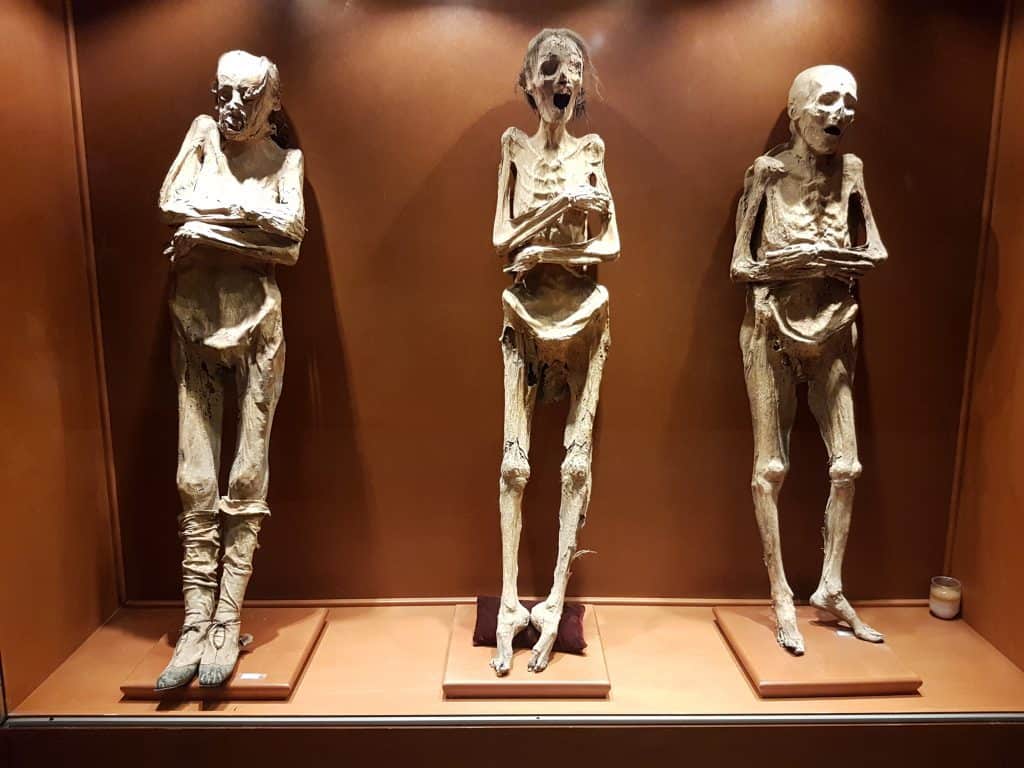
“Mummies in Mexico? Yes, you read that right. Guanajuato, in the dead centre of Mexico, is where you can find the Museo de las Momias de Guanajuato.
In 1870 the government began requiring families to pay a “burial tax” to keep their loved ones buried. If the tax wasn’t paid the bodies were exhumed and when this happened it was discovered that the dead had been naturally mummified and the bodies were then stored in an underground ossuary.
Today visitors can view these mummies in the museum that now stands on the same spot underneath the cemetery as the original building. Wandering through several dimly lit rooms you will discover mummies of all ages, some still wearing scraps of clothing that they were buried in. Their faces appear gaunt and twisted, pulled into grotesque expressions caused by their skin drying out in their crypts. This exhibit is very interesting but not for the faint of heart.
Did you know there’s also a very small mummy museum in the pueblo of Santa Elena in Yucatán?
Jalisco
Guanajuato, the capital city of the state of Jalisco is home to numerous museums, many of them truly excellent. Other cities, such as Tequila, the home of the famous Mexican liquor also has a number of wonderful museums to explore.
Museo de Cabañas, Guadalajara

This museum, also called the Hospicio Cabañas, is home to a series of murals by one of Mexico’s greatest muralists: José Clemente Orozco. The building was designated a UNESCO World Heritage Site in 1997. Once you’ve managed to tear yourself away from the incredible murals, don’t miss the other collections in this wonderful museum and absolutely remember to enjoy the sculptures by Alejandro Colunga out front.
Quintana Roo
Quintana Roo might not strike you as a super cultural place to visit but prepare to be surprised. Not only can you visit the wonderful Maya ruins such as Chichén Itzá, Coba and Tulum while staying in Quintana Roo but also fabulous museums and even, down in Bacalar, a museum with in fort (it was here that I first realised that the British were pirates in this region).
Quintana Roo information

Maya Museo de Cancun
by Michele, from atastefortravel
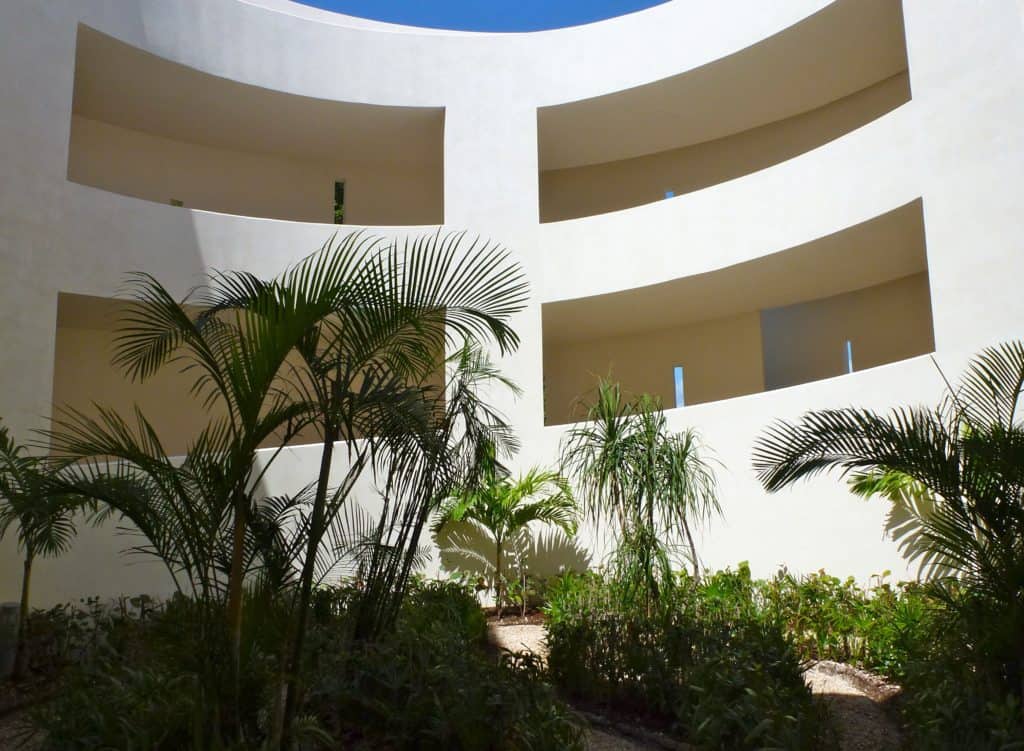
Set in Cancun’s glitzy Hotel Zone just steps away from several luxury all-inclusive resorts and a long white sand beach, the sophisticated Museo Maya de Cancun is well worth rolling up your beach towel to visit. Exploring this museum is definitely one of the top things to do in Cancun for those who want to understand the culture of the Maya people.
Designed by Mexican architect Alberto Garcia Lascurain, it offers a look at the traditions, practices, and heritage of both the ancient and modern peoples of the Yucatan peninsula and Guatemala. Within its exhibits, you’ll see a fine collection of precious alabaster, obsidian and jade burial masks, weapons and artefacts collected by the National Institute of Anthropology and History. Other highlights include dioramas of burial sites showing the positioning of such valuables in situ.
This contemporary museum also makes the most of its location as several striking walkways, tall glass windows and soaring architectural details bring the outdoors in and connect visitors to the archaeological site of San Miguelito, with its temples, ceremonial shrines and shrines dating from 1250 AD.
MUSA (Museo Subacuático de Arte)
by Eloise from myfavouriteescapes
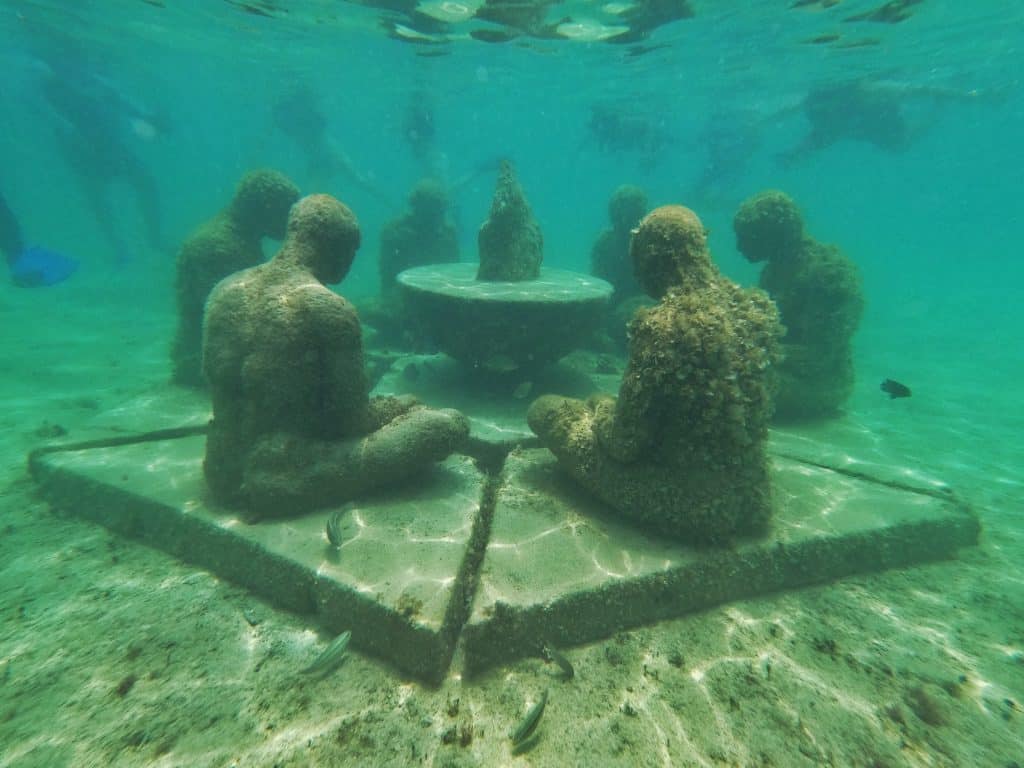
One of the most original museums in the world, MUSA, the Museo Subacuático de Arte or underwater contemporary museum of art, is in Cancun. You’ll have to dress appropriately to tick this one off your list of must-visit museums though: mask and fins are required to wander in the galleries!
But if you don’t want to get wet, you can also opt to visit one of the galleries on a glass-bottom boat or even a submarine!
The British sculptor and scuba diver Jason de Caires found a way to combine his two passions in this museum. He had the fantastic idea to sink statues and create fascinating artificial reefs. Snorkellers and scuba divers, can visit the three galleries that are home to 500 sculptures. His art constantly evolves as corals, and other marine animals gain territory.
Aguascalientes
Museo Nacional de la Muerte, Aguascalientes
by Emily from luxurybackpack.com
Aguascalientes is a really vibrant city in central Mexico with a very cool and quirky vibe. I was not surprised therefore to find that its most popular museum to visit is the National Museum of Death. You can’t really get more quintessentially Mexican than a museum dedicated to the dead. The first few rooms explore death in art, the news, history, and religion.
Throughout the rest of the small museum, more of Mexico’s colourful representation of death prevails, and you’ll see a collection of sculptures, masks, and ceramics. Whilst not a huge museum, it is pleasant for a stroll around and definitely worth the ticket price. Plus the building itself is beautiful.
San Luis Potosí
Museo Nacional de la Mascara
by Emily
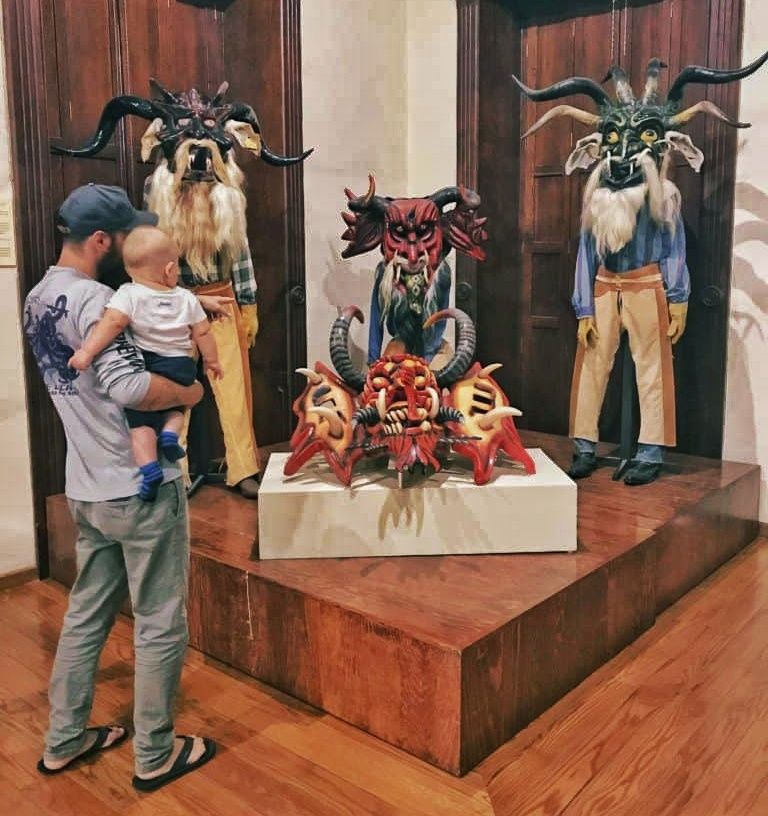
Museo Nacional de la Máscara: the most surprisingly impressive museum I visited on my travels in central Mexico. With over 1000 masks on display in the stunning former mansion, the museum takes you through the history of Mexico’s dance and ritual heritage. The display is very well executed with just the right amount of accompanying information to make it educational but still fun to look around. I would definitely recommend this museum as a must visit when in central Mexico!
➕ The state of San Luis Potosí is also home to the weird and wonderful gardens of Edward James, Las Pozas (Xilitla). I (Mexico Cassie) visited these gardens while staying in the Sierra Gorda and highly recommend them to anyone who loves adventure and weird places! There is also the Museo Leonora Carrington to visit in Xilitla.
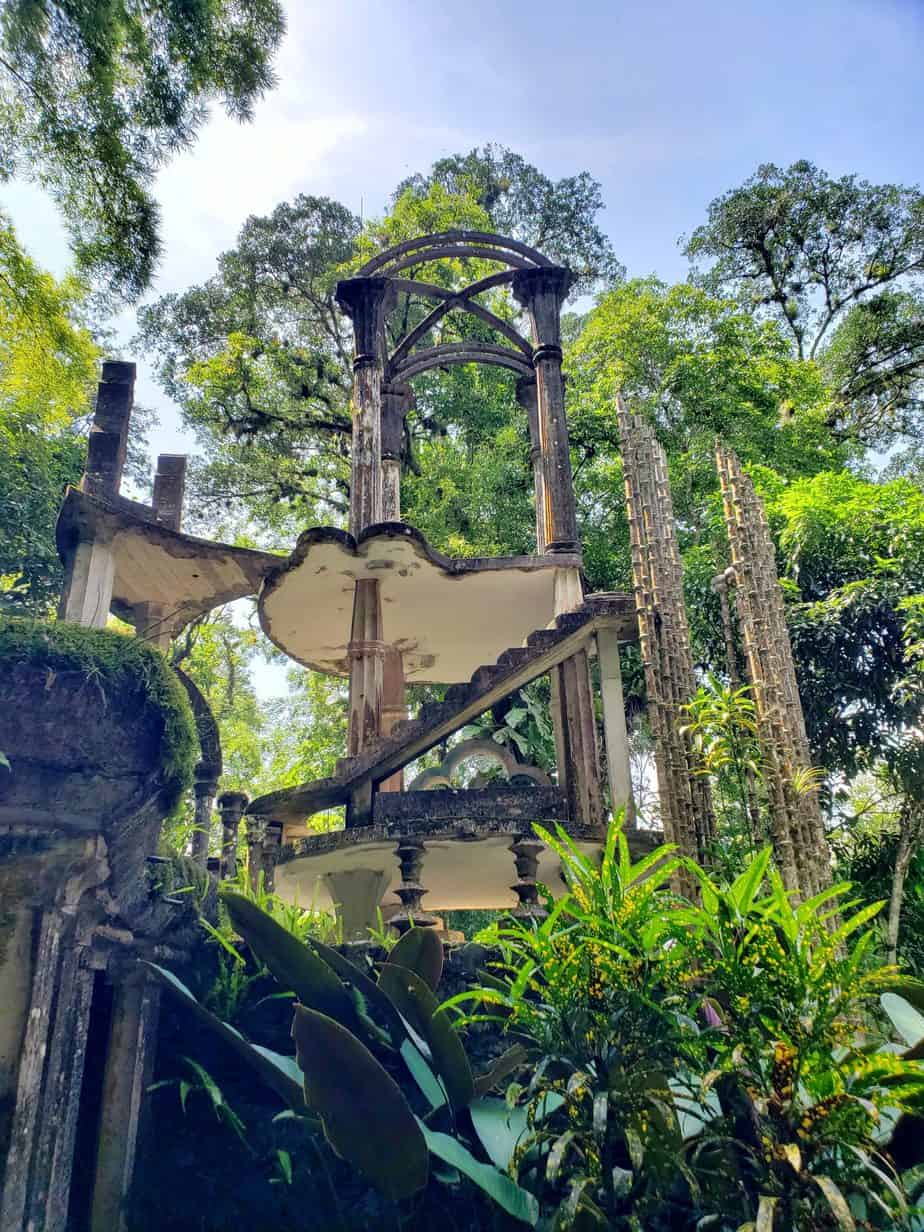
Morelos
Robert Brady Museum, Cuernavaca
by Julianna from lettersfromatravelinggirl
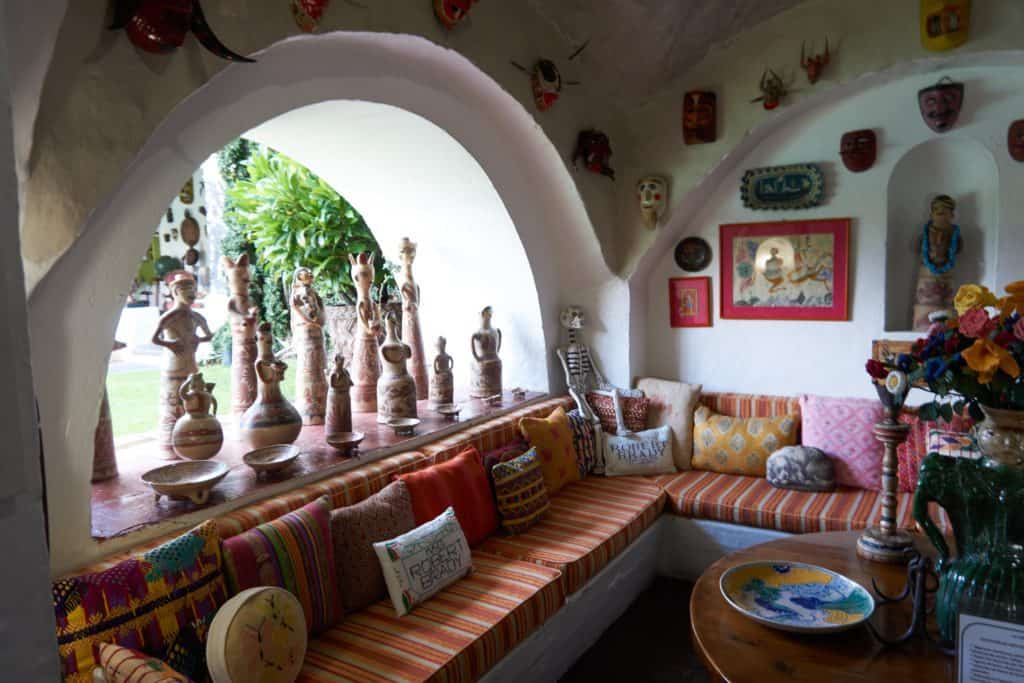
The Robert Brady Museum, located in the centre of Cuernavaca, opened its doors to visitors in the 90s and has since fascinated minds with the travel and satires of Robert Brady. This English artist lived in this house for 25 years and used it mainly to entertain famous people of that time. The house tells the story of his travels with artefacts from all over the world covering every inch of the house.
Visiting it can give one a feel for what it must have been like to enjoy life in the mid 20th century and how the rich lived. The house itself is also gorgeous, built in a traditional style with an adorable courtyard in front of the house and the backyard with a seating area and the terrace. It is one of the most beautiful houses I’ve been in. The house also contains artefacts from the continent of Africa and from Latin America.
The museum also puts on different events during the year, such as the French film festival and theatre performances. The museum also participates in the Night of the Museums happening in the region, which may be a unique way to visit this beautiful house. Overall it is a great place to visit to learn a little bit more about the hight of Cuernavaca and the life of people at that time.
Yucatán
While the museums in Yucatán aren’t, in my honest opinion, among the very best in Mexico, they are interesting and do offer a great look at the rich and vibrant history of the region. And, of course, there are more ruins in Yucatán than practically anywhere else in Mexico.
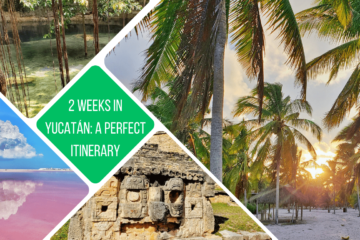


0 Comments